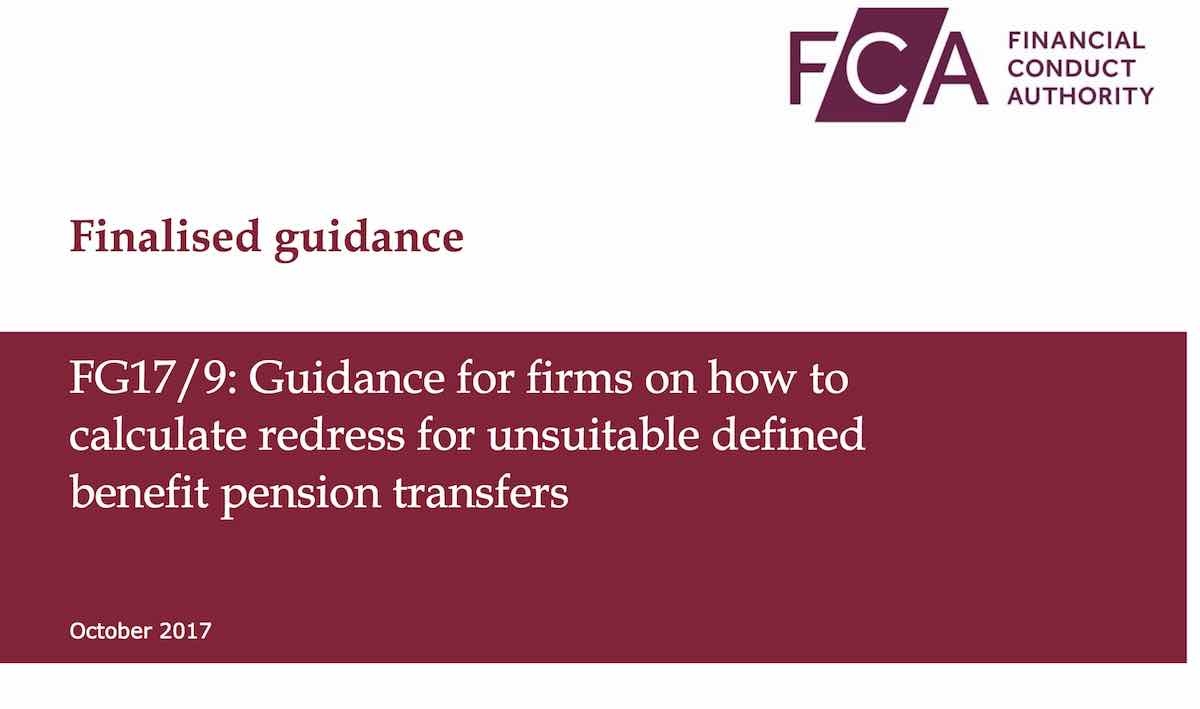The FCA has issued new guidance today on how redress should be provided for pension transfer mistakes.
In its paper FG17/9: ‘Guidance for firms on how to calculate redress for unsuitable defined benefit pension transfers’, the FCA says the primary aim is to restore pension transfer users to the position they were in before the transfer took place and this may involve lump sum payments.
The guidance is designed for respondents who receive a complaint about advice they gave to transfer all or part of the cash value of accrued benefits under a DB pension scheme into a personal pension scheme.
The guidance, which runs to six pages, contains assumptions which respondents should use to calculate appropriate redress in circumstances where the customer received advice from the firm which was “negligent or contravened relevant requirements”.
It also requires respondents to resolve issues where, if the advice had not been negligent or had complied with the relevant requirements, the customer would not have transferred all or part of the cash value of accrued benefits from the DB pension scheme into the personal pension scheme.
The document also covers cases where respondents receive a complaint about a case involving a non-joiner, opt-out, or FSAVC.
The standard approach to calculating redress is detailed where a firm or adviser has failed to give “compliant and proper advice”, or has committed some other breach of the relevant requirements.
The guidance states: “The basic objective of redress is to put the customer, so far as possible, into the position they would have been in if the non-compliant or unsuitable advice had not been given or the breach had not occurred.”
Cases need to be assess individually but the guidance makes clear that in many cases the advice would have been related to the complainant transferring accrued benefits from a DB pension scheme to a personal pension scheme.
The redress calculations, detailed in the document, should reflect the features of the customer’s original DB pension scheme, says the FCA. This would include, for example, different tranches of pension increase rates and deferred revaluation rates.
In terms of compensation, the guidance says that where it is not possible to pay redress into the customer’s personal pension, the redress should be paid in the form of a lump sum to the customer.
Any compensation would need to take into account the customer’s individual tax position and the customers wider financial position so that they are not left at a loss. Marital status and partner age may also need to be considered.

